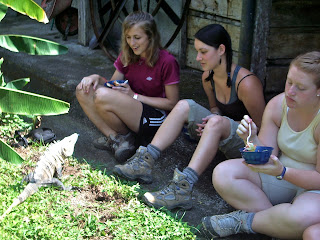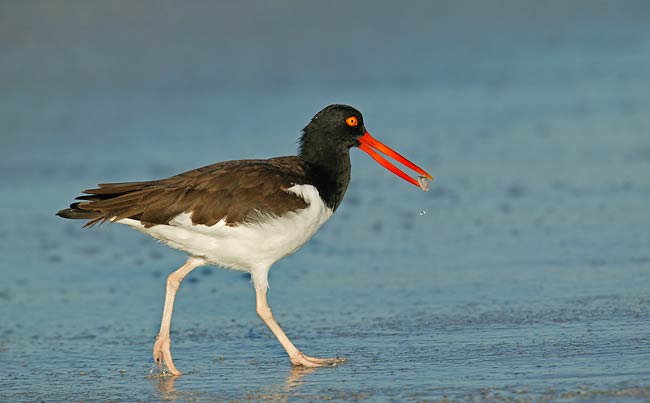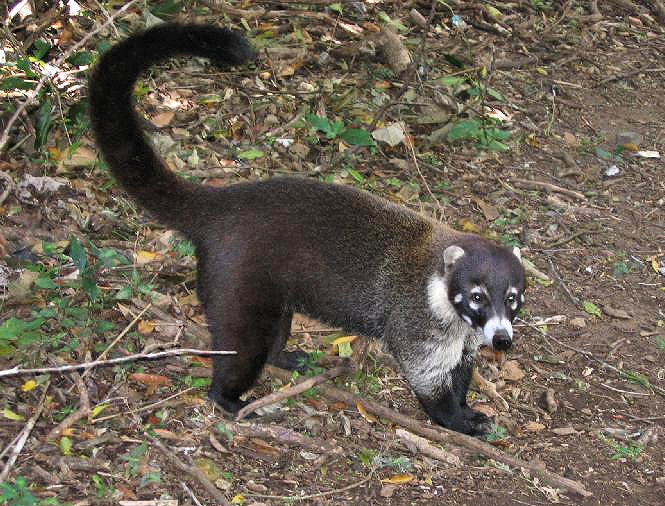The 16th was a travel day: boats from Corcovado to Sierpe, then a bus from Sierpe to a nice hotel at Playa Hermosa. The most exciting part of the day was waiting for two hours in Sierpe because our bus had fallen into a ditch on its way to pick us up. When the bus finally made it, there were several large dents in the side and near the taillights, and one of the bottom compartment doors had to be tied on. Luckily, we made it to Playa Hermosa with no further incident, in time for a gorgeous sunset.
The hotel showers were cold but clean, though even my semi-clean clothes felt pretty dirty afterwards. We had a tasty dinner at a seafood place nearby, where most tables ordered the grande seafood plate.
I did some laundry in the hotel room sink (yay clean underwear), and then enjoyed a great night’s sleep in a soft bed.
The 17th was another travel day, thought we stopped in two places before reaching our final destination: a campsite in Santa Rosa National Park, where we stayed for the rest of the field trip.
The first stop was Carara, another national park, where we walked around with lots of foreign tourists and did species reports on several plants and animals. A cool park, but not the most interesting way to spend the time, and I was really hungry the whole time. Lunch was exactly what I wanted though: pizza! And soda and salad. So good after a week of rice and beans. The ctenosaurs wanted some too.
 |
| walking around Carara |
We also walked over a bridge, where a bunch of crocodiles hang out in the river below.
After another bus ride nap, we arrived in Liberia, a town with internet cafes and supermarkets. We stopped here for only an hour so we could contact home and buy anything lacking, lost, or broken from the first half of the field trip. I bought ice cream, some cheap sunglasses to replace the pair that is now somewhere in the Pacific, a bigger memory card for my camera, and a few minutes of internet to check my email and let my parents know I was still alive.
 |
| YES. I needed multi-colored hair gel. |
 |
| back on the bus |


















































